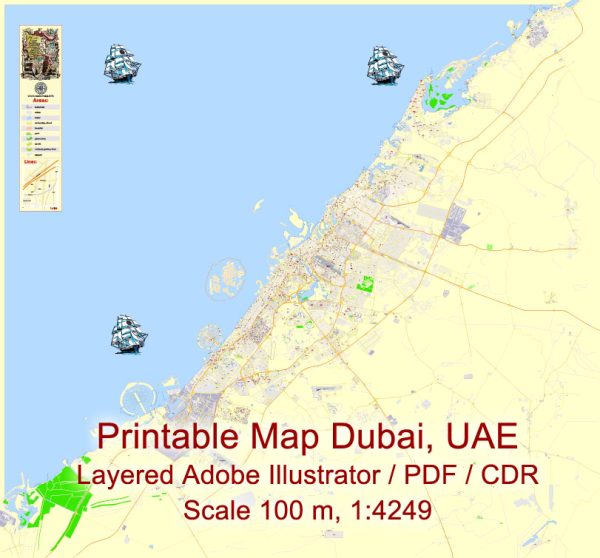Dubai, a city in the United Arab Emirates (UAE), is renowned for its rapid and ambitious urban development over the past few decades. The city has transformed from a small trading and fishing village into a global metropolis known for its impressive skyscrapers, luxury lifestyle, and cutting-edge infrastructure. Here’s a description of Dubai’s urban development:
- Skyscrapers and Iconic Architecture: Dubai is home to some of the world’s most iconic and tallest skyscrapers, including the Burj Khalifa, which is the tallest building on the planet. The cityscape is marked by a stunning array of modern architecture, which has redefined the skyline. The Burj Al Arab, Palm Jumeirah, and the Dubai Frame are just a few examples of innovative and iconic structures.
- Artificial Islands: Dubai has gained international recognition for its development of artificial islands, such as the Palm Islands and The World. These massive engineering projects have expanded the city’s coastline and created exclusive residential, commercial, and leisure destinations.
- Transportation Infrastructure: Dubai has invested heavily in transportation infrastructure. The city is known for its extensive network of well-maintained roads and highways. The Dubai Metro is a driverless, fully automated train system that has made public transportation more efficient and accessible.
- Economic Free Zones: Dubai’s urban development strategy includes establishing economic free zones like Dubai Internet City, Dubai Media City, and Dubai Healthcare City. These zones have attracted multinational corporations and fostered a business-friendly environment, contributing to economic growth.
- Tourism and Hospitality: Dubai’s transformation into a global tourism hub is evident in its numerous luxury hotels, resorts, and entertainment attractions. The city has become a prime destination for tourists, hosting events like the Dubai Shopping Festival and Expo 2020.
- Green Spaces and Sustainability: In recent years, Dubai has also focused on sustainable urban development. The city has increased the number of parks and green spaces, including the Dubai Miracle Garden. Additionally, Dubai has implemented initiatives to reduce its carbon footprint and promote environmental sustainability.
- Cultural and Educational Facilities: The city has invested in cultural and educational facilities, including museums, theaters, universities, and research centers. The Dubai Opera and the Dubai Museum are examples of cultural landmarks.
- Smart City Initiatives: Dubai is working to become a smart city by implementing cutting-edge technology to enhance various aspects of urban life. These initiatives include smart transportation, government services, and healthcare.
- Diversified Economy: Dubai has diversified its economy beyond oil and gas, with a strong focus on trade, finance, tourism, and real estate. This diversification has contributed to its economic growth and resilience.
- Visionary Leadership: Much of Dubai’s urban development can be attributed to the visionary leadership of the ruling family, who have played a crucial role in driving the city’s transformation and growth.
Dubai’s urban development is characterized by its ambition, innovation, and rapid pace of change. It continues to evolve and adapt to the changing needs of its residents and the demands of the global economy.


 Author: Kirill Shrayber, Ph.D.
Author: Kirill Shrayber, Ph.D.